After years of development of smart phones, there is basically no “unable to use” mobile phone system in the equipment of major manufacturers.
But there are still gaps between different systems and even UIs. There are problems with the size of the vendors, and sometimes they are related to the aesthetics of each family.
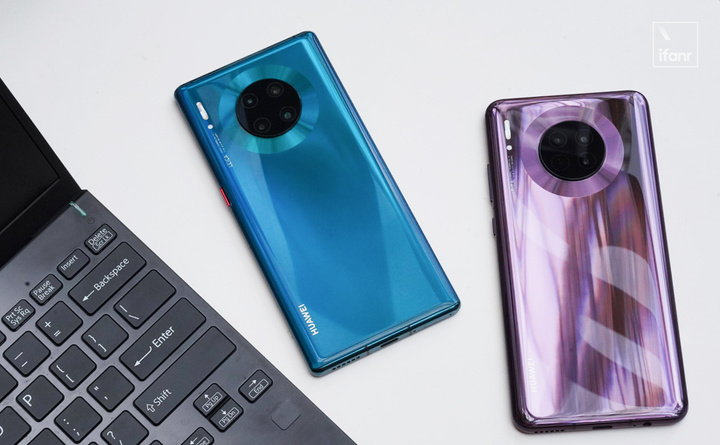
To be honest, aesthetics is a very subjective thing, and there is no absolute beauty and ugliness. Some people will say that he likes the quasi-materialized design of the year, and some people think that flattening is the future. Arguing and arguing, no one can convince anyone.
However, the evaluation system only refers to heroes in terms of value, which is obviously one-sided. The color value only refers to the part of the visual experience and only represents the layout, color and design elements.
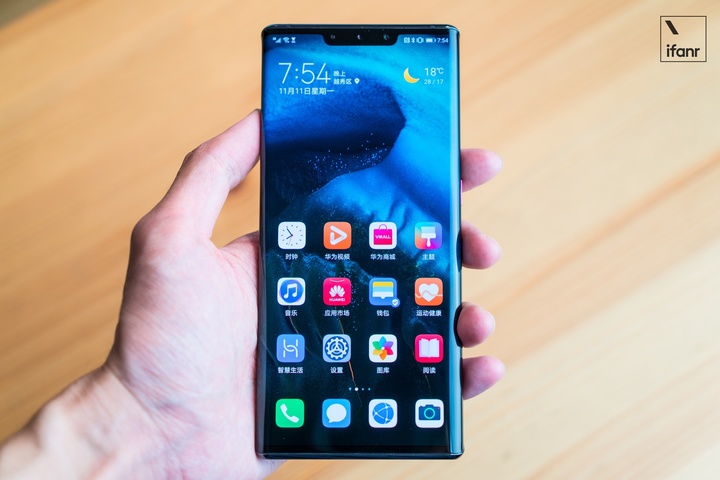
For those who really “get started”, they will be more concerned about whether the sliding gestures are reasonable, or the ease of use of the drop-down notification bar, negative screen, etc. For these parts, we can rely on the survey data. , find a set of standardized standards.
How to make your own characteristics on top of this set of standards, and let the hardware and software achieve a deeper integration, but it is the direction that every mobile phone manufacturer needs to work hard.
We used a Huawei Mate 30 Pro to experience the latest version of EMUI10 for a few days. It doesn’t work well. Let’s take a look.
Good-looking interface, stemming from the study of color and layout
The EMUI10 continues the cool blue and white main colors of the past, and based on this, introduced six “Morland” colors to enhance the aesthetic of the interface as an auxiliary color system.

This color is derived from the famous Italian painter Giorgio Morandi, who likes to blend gray and white with other bright colors when he creates his paintings, and finally presents an elegant and intriguing taste. The feeling, so some people say that he is the representative color of sexual cold wind.
▲ Large area of low saturation color
In the contact application of EMUI10, when you click on the details page, you can see a large area of this low-saturation color interface.
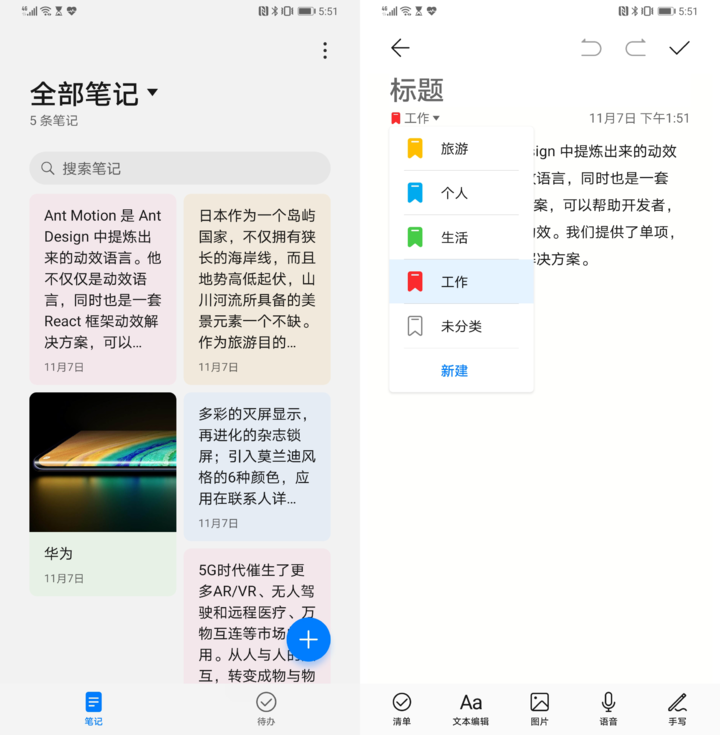
▲ Each label corresponds to a color
The other is the memo application. As long as you select the label classification for each item, you will visually see the color difference in the grid view, keep it simple, and also help you find the content of the corresponding label more accurately.
In the color section, EMUI10 has been adjusted in two other places. One is the screen display that we are familiar with, and the other is the dark mode design.
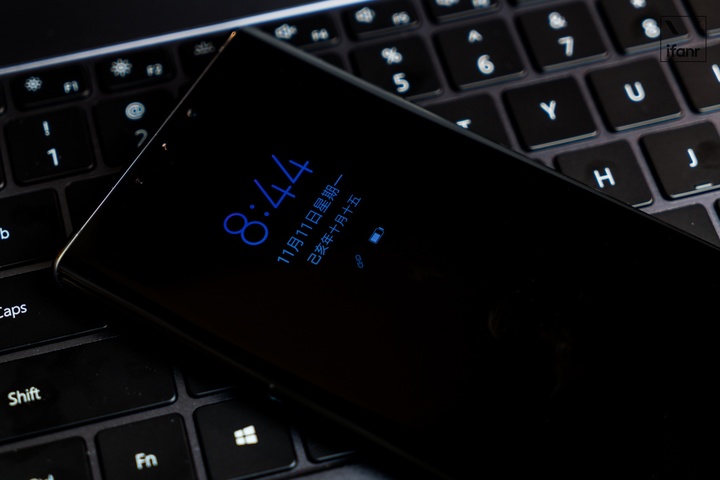
▲ AOD off-screen display clock color will change over time
In general, most people have only one need for screen-off display, that is, convenient time and unread notifications, and rarely tangled with its color. But EMUI10 draws inspiration from the sky at different times, so that the clock that goes out of the screen will show different color changes over time.
I also found out during the experience that when I wake up in the morning and pick up my phone for the first time, a light blue clock will appear on the screen; and after work in the evening, the clock will turn orange like a sunset, very Should be.
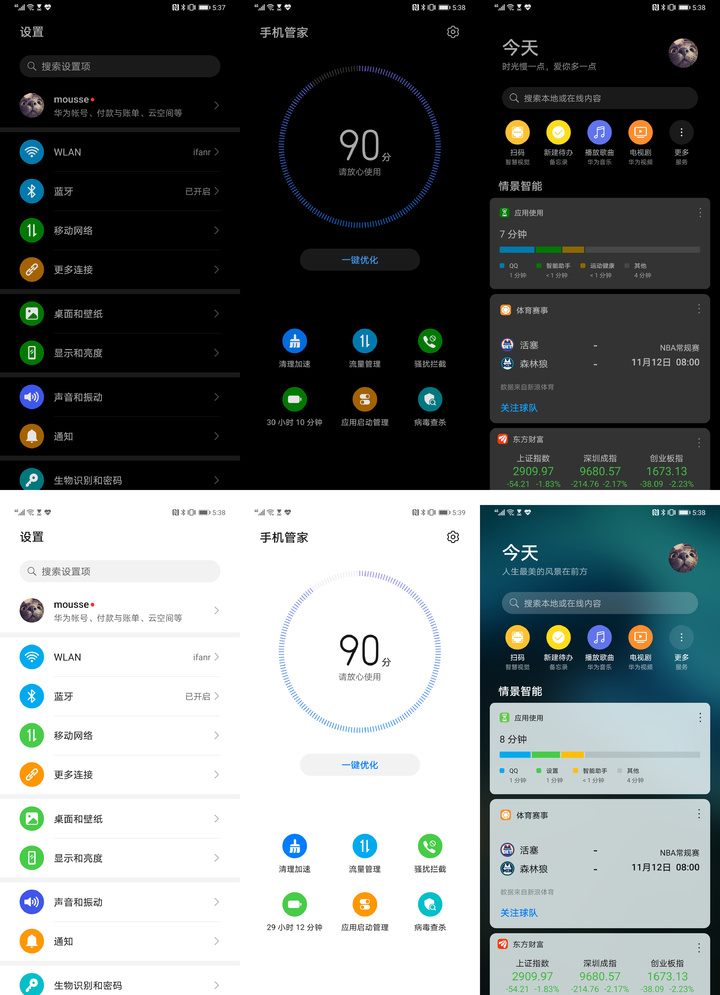
▲ The same interface, contrast between dark mode and light mode
In the dark mode design, EMUI10 does not simply and rudely reverse white to black. On the other hand, in an interface, I often see multiple dark shades of different shades. For example, on the negative screen interface, the background color of the dark mode is all black, but the cards and buttons are lighter gray.
If it’s some important buttons, such as the button on the bottom bar or the icon on the far left of the interface, the original color will remain in the dark mode, so you won’t be able to change color. Differentiate their respective functions.
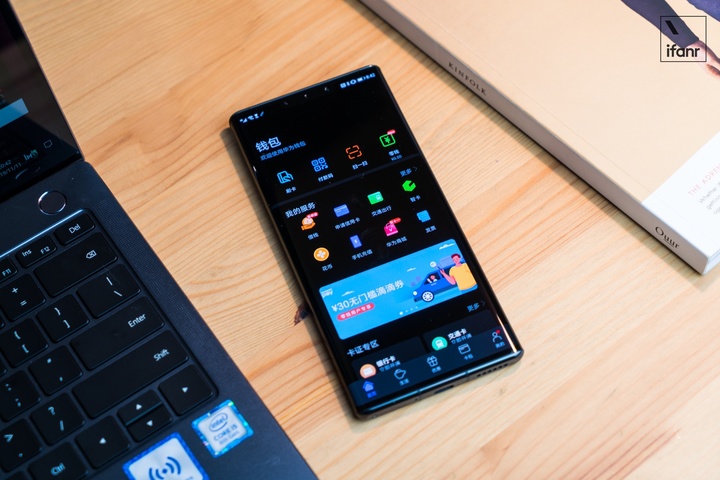
When Huawei released the EMUI10, it also said that they hope that the dark mode can guarantee the visual comfort and legibility similar to the light interface, which requires thinking about the perception of human vision under different brightness. A large number of test data based on human factors research was used as a support.
In the other interfaces of EMUI10, you will also see a lot of mainstream design elements:

▲ A large number of rounded rectangular cards
1. Icons, background multitasking, negative one-screen cards, and a variety of applications can see a lot of rounded rectangles, which makes the whole system look more uniform.
2. Background multi-tasking, drop-down notification bar and negative background bokeh effect, can better highlight the card design

▲ There will be a highlight after the bottom bar is selected
3. In the basic applications such as sports health, wallet, etc., the left-hand headline is enabled, most of the function keys are placed at the bottom for one-handed operation, and there is an obvious highlighting effect when clicked

▲ Well-designed illustration
It is worth mentioning that EMUI10’s built-in application also introduces beautiful illustrations in some interfaces while leaving a large area of white space. Because for a newly activated new machine, it is inevitable that there will not be enough content, only the white background, and these illustrations can fill the vacant part of the interface well, and make the whole interface more Lively.
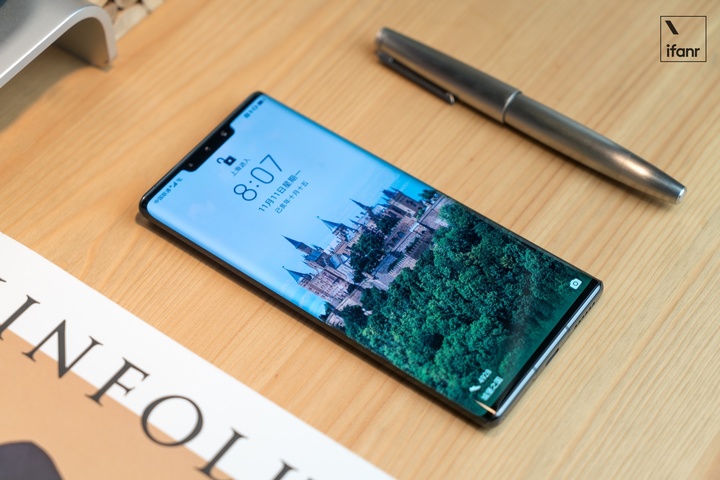
Huawei also uses AI technology on lock screen wallpapers. It will automatically find the center of gravity of this image, and then combine some of the aesthetic principles with balanced composition as a wallpaper.
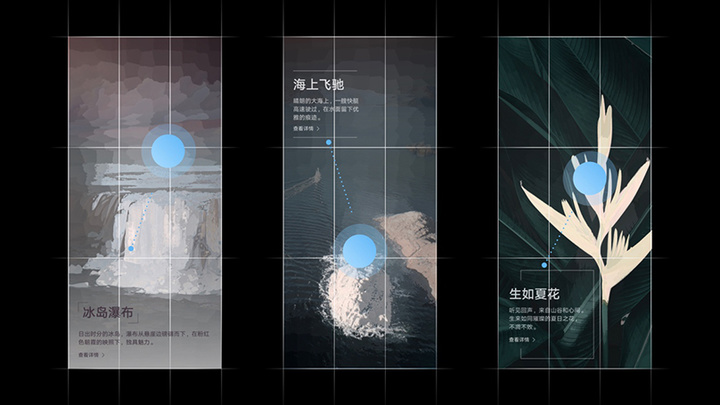
▲ AI lock screen will automatically find the center of gravity of the wallpaper
So, every time I unlock my phone, I will also sigh that EMUI10 is highly accurate in wallpaper cutting, neither too far from the subject nor cropped to the edge, but will focus on the most appropriate Location.
Where does the fluency of “follow the hand” come from?
When mainstream consumers judge whether a mobile phone system is smooth, they often use a very graphic metaphor: does its interface follow suit?
The term “hands” as used herein refers to the response of the system to finger sliding operations. For example, when the finger slides up from the bottom of the screen and calls out multitasking, can the card interface keep up with the sliding track of your finger? Or do you make corresponding feedback based on the direction in which your finger is sliding?
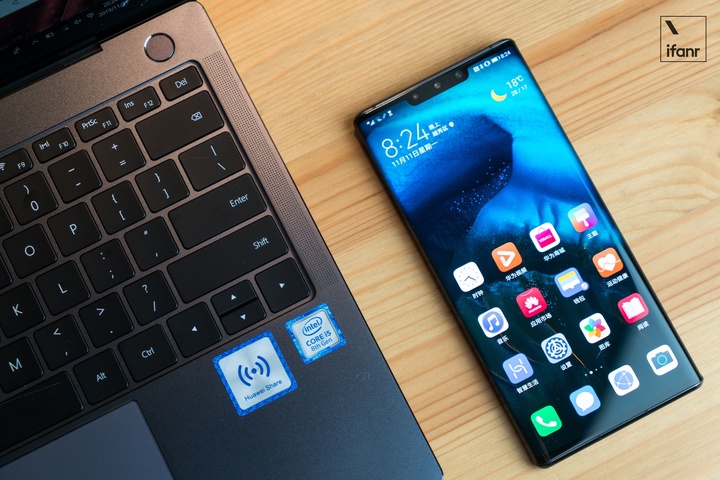
This doesn’t sound like an eye-opener, but it’s often an important indicator for users who actually use their mobile phones to evaluate “mobile phone fluency.” Even if you don’t say it on your mouth, your fingers and eyes can still appreciate it.
So, whether it has excellent dynamic design, whether the sliding operation is intuitive, has become a very important part of the current mobile phone system design.

▲ On the bottom, draw back to the main screen, pause on the top and call out multitasking, and slide the screen left and right to return to the previous layer
At present, EMUI10 supports the most mainstream sliding gestures, that is, the back to the main screen on the bottom, the upper stroke to pause the multi-tasking, and the left and right sides of the screen slide back to the previous layer. Similar interactions can be seen on other Android phones, while EMUI10 does more work on interface switching and multitasking.
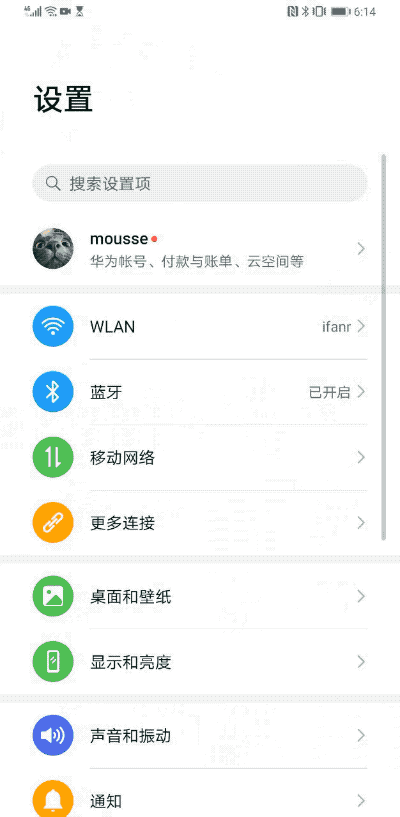
▲ Under the multitasking interface, the task card can follow the movement of the finger
For example, when I slide from the bottom of the screen, the finger moves in an arc, but at this time the task card can still follow the movement of my finger, and the process of zooming in and out; if it is at any one At the pause, the card will naturally transition to the multitasking interface, which is typical of the dynamics expected.

▲Enable effects when opening/closing apps
When you open the app and return to the home screen, the zoom in and out effects follow the same route, allowing you to visually see the transformation process for the entire operation, not just a simple gradient.

▲ Elastic effect when pressing the icon
In addition, EMUI10 also adds a stretch effect to icons, some buttons, and cards. Simply put, users will see a zoom effect that is “pressed down”, which simulates the physical laws of the real world as much as possible. Visual satisfaction.
It can be said that compared with previous generations of EMUI systems, this EMUI10 has made great progress in dynamic design, not only giving “fingers” timely feedback, but also allowing “eyes” to feel comfortable and smooth special effects. As close as possible to the “psychological” expectations of people, and ultimately into the system design.
Of course, many manufacturers know the effect they want, but to be just right, you need to constantly debug through calculation formulas. In the end, excellent detail design will bring additional surprises to users.
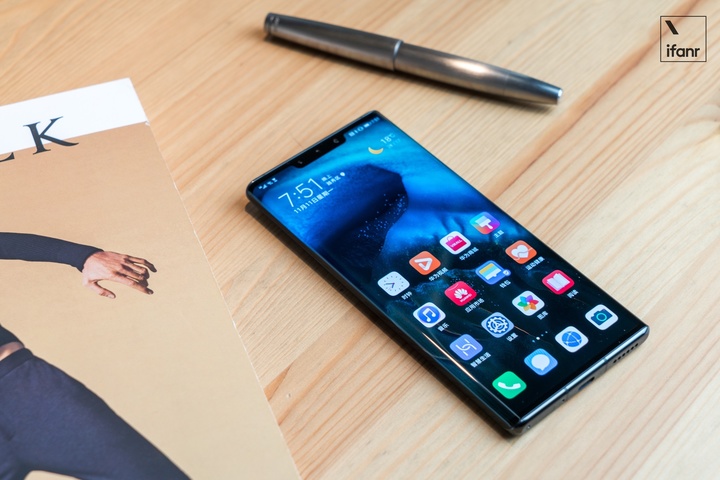
In system optimization, EMUI10 still incorporates many Huawei self-The underlying optimization technology of the research not only includes the EROFS file system involving file management, but also the GPU Turbo that enhances the game experience.
Although these technologies are difficult to visualize, the ultimate goal is to ensure the smooth and stable experience of the entire mobile phone. It is precisely the differentiated competitiveness of Huawei mobile phones at the software level.
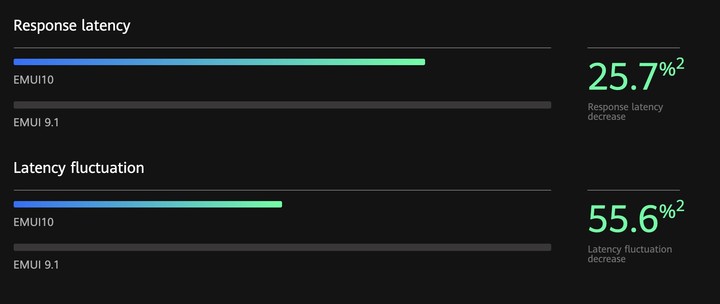
In EMUI10, Huawei has also added a new “Determining Delay Engine” to better ensure the operational priority of foreground tasks. This is a common scenario such as microblogging WeChat, playing large games and editing short videos. In the middle, there are good applications.
Popularly, the “Determining Delay Engine” is similar to a dispatcher on a highway. It automatically limits different cars (that is, different mobile phone tasks) to the corresponding speed lanes. It will also first incorporate the higher priority car into the fast lane in time to ensure stable and smooth operation of the road.
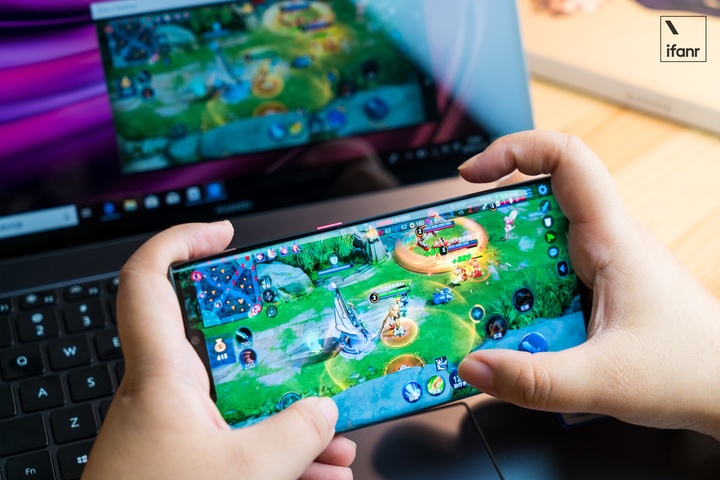
When I experienced EMUI10, I also found that when I open four or five apps and large games continuously, if I want to temporarily switch from the game to other apps, and then quickly switch back to the game interface, I can basically switch to the game. After the moment, the full frame rate is maintained, and no finger moves up, but the frame is dropped.
Another scenario where significant improvement is achieved is a high-frequency multitasking switch operation. Recently, I also chatted with friends on the shopping list of Double Eleven. I need to frequently switch back and forth between WeChat and Taobao. It is replaced by other Android phones. It will probably be stuck for a long time. Typing is not sensitive, but the EMUI10 system maintains consistent, smooth click efficiency.
Multi-device full scene linkage
Evaluation of the practicality of EMUI10, only talking about Huawei mobile phones is not enough, because the user’s use of the scene will not be limited to the mobile phone, they will use the computer to work, will turn on the TV to watch the video, will also connect the speakers to listen to music.
However, these usage scenarios are often viewed in isolation by users because most hardware devices do not achieve good linkages. There are system compatibility issues, and most of the vendors are small and it is difficult to balance the application of all platforms.
It’s like you bought a mobile phone from factory A and bought a computer from factory B. If you want to send a file to your computer, the most common one is to use WeChat and QQ as transmission agents, or else Resolved by the data line.
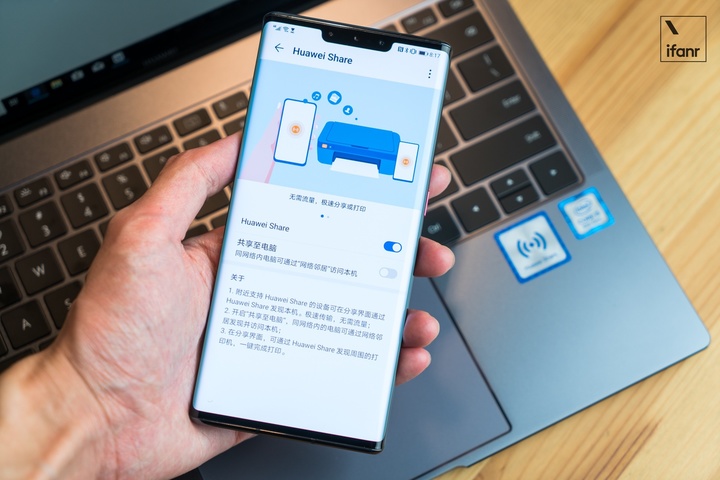
▲ Open the HUawei Share function to achieve a one-click connection with Huawei computers
But for Huawei users, thanks to Huawei’s layout of its own hardware ecology in the past few years, Huawei mobile phones have been able to seamlessly connect with Huawei’s own TVs, speakers, laptops and other devices. The data transfer gap between the device and the device.
In the experience of EMUI10, I specially found a Huawei MateBook X Pro to connect with the mobile phone. As long as you turn on the NFC and HUawei Share functions on the mobile phone, and then touch the corresponding tab of the computer, the two will be The connection is automatically established. The entire process does not use the data line, nor does it require you to find the device name in the Bluetooth list, very quickly.

▲ After successful screencasting, you can use the mouse to directly drag photos and files from your phone to the PC desktop
In addition, in the EMUI10 generation, I can also see the complete mobile phone interface directly on the PC desktop. At this time, the mouse is equal to our finger, and the operation of the mobile phone completed in the PC window will be real-time. Mapped to the phone and vice versa, this is equivalent to integrating the information of both devices into one screen.
But don’t think that this is just a simple screencast. Huawei has also opened up the data transmission channels of these two systems. For example, if you take a good photo on your mobile phone, or receive a Word document, you can click it directly with your mouse and drag it from the phone window to the PC desktop. At present, this drag operation is not only suitable for album images, but also supports applications such as video and file manager, which greatly reduces the threshold for multi-device collaborative office.

▲The Gospel of “Huawei Family Barrel”
In the device linkage, another major improvement of EMUI10 is reflected in the video call, which is Huawei’s “Changlian Call” function, which is the world’s first call product across mobile phones, computers, TVs and even speakers. Covering the wide range of scenes, and Huawei’s hardware layout is not unrelated.
So, when you are away from home, you can use Huawei mobile phone to make video calls with another Huawei mobile phone; when you are at home, you can automatically switch to the Huawei smart screen at home, or even cut the speaker to transmit only voice. The experience is very convenient.
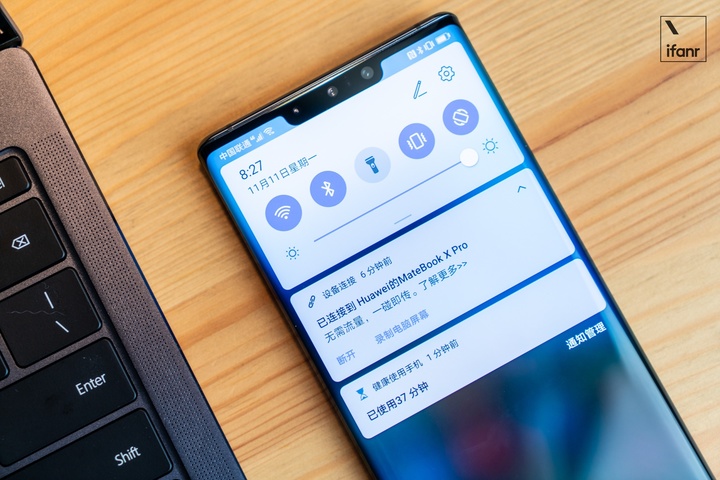
In fact, Changlian Call also hides Huawei’s vision of the social scene in the 5G era. When the bandwidth environment is greatly improved, our social network will obviously not only stay at the current text and image level, but will further move to real-time high-definition video, and even true three-dimensional interaction.
After establishing a mature multi-device video calling capability, Huawei can introduce the Changlian call feature into the VR/AR device in the 5G era, enabling both parties to communicate in a more stereoscopic stereoscopic form. See each other’s gestures or body language from all angles. From this point of view, Changlian Call obviously has great potential.
EMUI10: A more complete system
In the past two years, Huawei’s mobile phones have achieved rapid growth in the global market. There are reasons for excellent hardware, but what many people have not seen is that Huawei’s EMUI system is actually making progress.
As you can see from EMUI10, Huawei obviously wants to do more than just explore the rounded rectangle icon, or a more aesthetic interface. In addition to these traceable standards and specifications, Huawei hopes more. Doing is deep into the systemLayer, the integration of the understanding of the fluency and ease of use of the mobile phone system and hardware, so that each component can play its maximum effect.
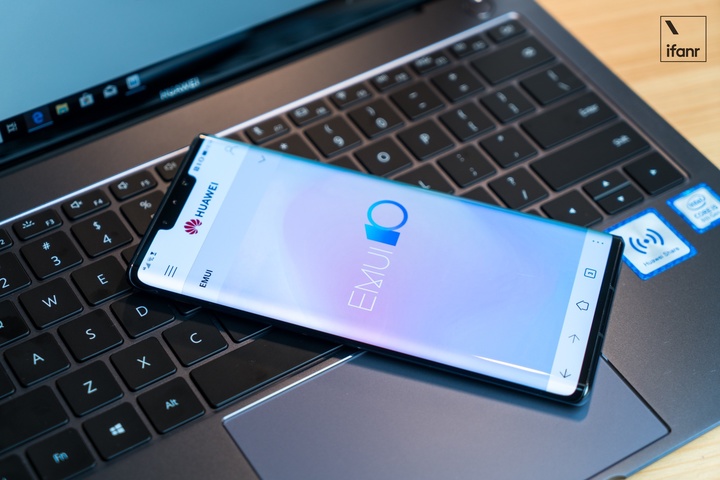
At the same time, smartphones have become the center of personal life, and even the center of all devices. When Huawei completes hardware layout in areas including PCs, smart homes, wearable devices, etc., EMUI will no longer be a pure mobile phone system, but will gradually evolve into a bridge between devices and devices. The connection is closer.
When this convenience forms a subtle habit, you may not be able to find a reason to leave Huawei mobile phones.